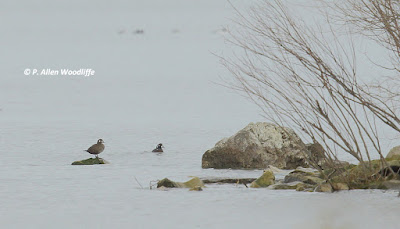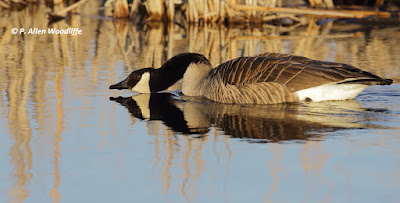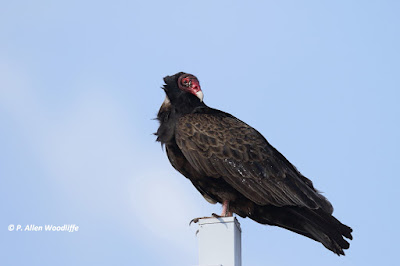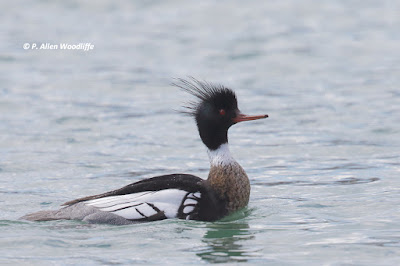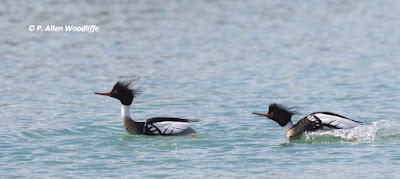Cormorants were, at one time, extremely rare. They were believed to be having a negative impact on the commercial and sport fishing industry in the first half of the 20th century, by consuming vast quantities of small fish that were part of the commercial fish targets or food for the larger sport fish. As a result they were heavily persecuted by destroying nests and killing the adults. Compounding the decline was the impact of DDT. The population declined significantly, and the species was being considered for endangered species status. There were no breeding colonies of them in the lower Great Lakes at all!
In my old files (I'm a bit of a pack-rat......not a surprise to those who know me well), I have a copy of the 1970 spring-summer issue of the Fish And Wildlife Review, a publication produced several times a year by the Department of Lands & Forests, precursor to the Ministry of Natural Resources, which is now the Ministry of Natural Resources & Forestry (I'm not sure why the politicians thought Forestry had to be added to Natural Resources, as ever since 1973 when MNR was created, Forestry was always included since it is a natural resource. But I digress......)
In this issue was a feature article on the dozen or so species which were to be initially included in this new piece of provincial legislation, the Ontario Endangered Species Act. In another article of this issue, two species were predicted to be added in the near future: Double-crested Cormorant and Common Loon!
I remember in my early birding years (mid-1960s to early 1970s) it was a novelty to get cormorant on one's daily checklist. By the middle 1970s, cormorants started to show up again, and by the later 1970s, they started nesting again in remote places of the lower Great Lakes. Efforts by the Canadian Wildlife Service and Ministry of Natural Resources were underway to band the young at accessible nests. As I was stationed at Rondeau, I had the opportunity on several occasions to join the mixed crew in these events. The main nesting location in the western basin of Lake Erie was on Big Chicken Island, a small island made up of cobble stones and overall about 2/3 the size of a football field. It emerged from the lake a few kilometres west of Pelee Island. There was no woody vegetation on it, and hardly even any herbaceous vegetation.
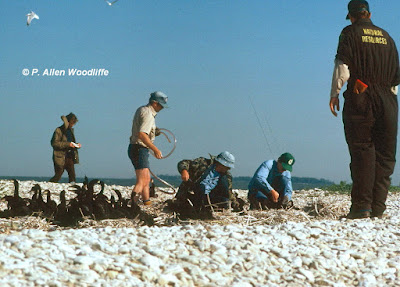 |
| Banding cormorants on Big Chicken Island, with East Sister Island in the background |
The excitement was short-lived. In only a few years the cormorants had rebounded considerably, and they expanded their nesting sites to several of the other remote islands in the western basin. East Sister Island was one of the main new nesting sites, but they also became well established on Middle Island and to a minor extent for a few years at Lighthouse Point Provincial Nature Reserve on Pelee Island.
It didn't take long for the nesting colonies on East Sister and Middle Island to have some major impacts on the lush vegetation there. Cormorants do eat fish, and their excrement is quite acidic. They were nesting in trees and in a fairly dense colony, and so when the ~4 chicks pooped over the edge of the nest, the leaves of the trees were eventually destroyed. Trees started dying. The lush vegetation was in serious trouble, as at the peak, there were well over a thousand nests on East Sister Island alone.
 |
| East Sister Island |
Middle Island is about the same size as East Sister, and has an interesting fairly recent human history. During the prohibition years, it was a busy place...a haven for rum runners and for the delivery of Canadian alcohol making its way to Ohio. Boat traffic was regular (a small harbour was created on the west side of the island) and a small air strip was cut out of the vegetation on higher ground. The place where the air strip used to be has been completely over grown for a long time. If you examine Google maps and zoom in closely in the Earth coverage, you can see the difference in the vegetation where the East-West air strip was located. There was even a small hotel and casino on the island during the early part of the last century. It was eventually abandoned, and by the 1980s was in complete disrepair. It was said that Al Capone was a periodic visitor to the island during prohibition days, to do 'business'.
The impacts of nesting cormorants on Middle Island were fairly drastic as well. However since 1999, the island changed ownership....it had been in American ownership for at least 80 years prior to 1999, but given its natural history significance and its availability on the market, Canadian patriotism came to the fore. Led by the Nature Conservancy of Canada in conjunction with numerous conservation and government agencies as well as concerned individuals, it was purchased and became Canadian owned. It is now part of the federal park system, being administered and managed by Point Pelee National Park. What was left of the island's hotel has since been removed.
Cormorants have continued to expand their nesting sites in the Great Lakes. They have expanded to places like Rondeau Provincial Park, initially occupying a small unvegetated island towards the south end of the bay/marsh area. There they nest on the sandy island or in the fallen trees that remain.
They have since expanded again, to a cluster of small trees along the edge of the bay.
 |
| Cormorant nesting cluster, with Bald Eagle at top |
 |
| Sunset over the western basin of Lake Erie |










